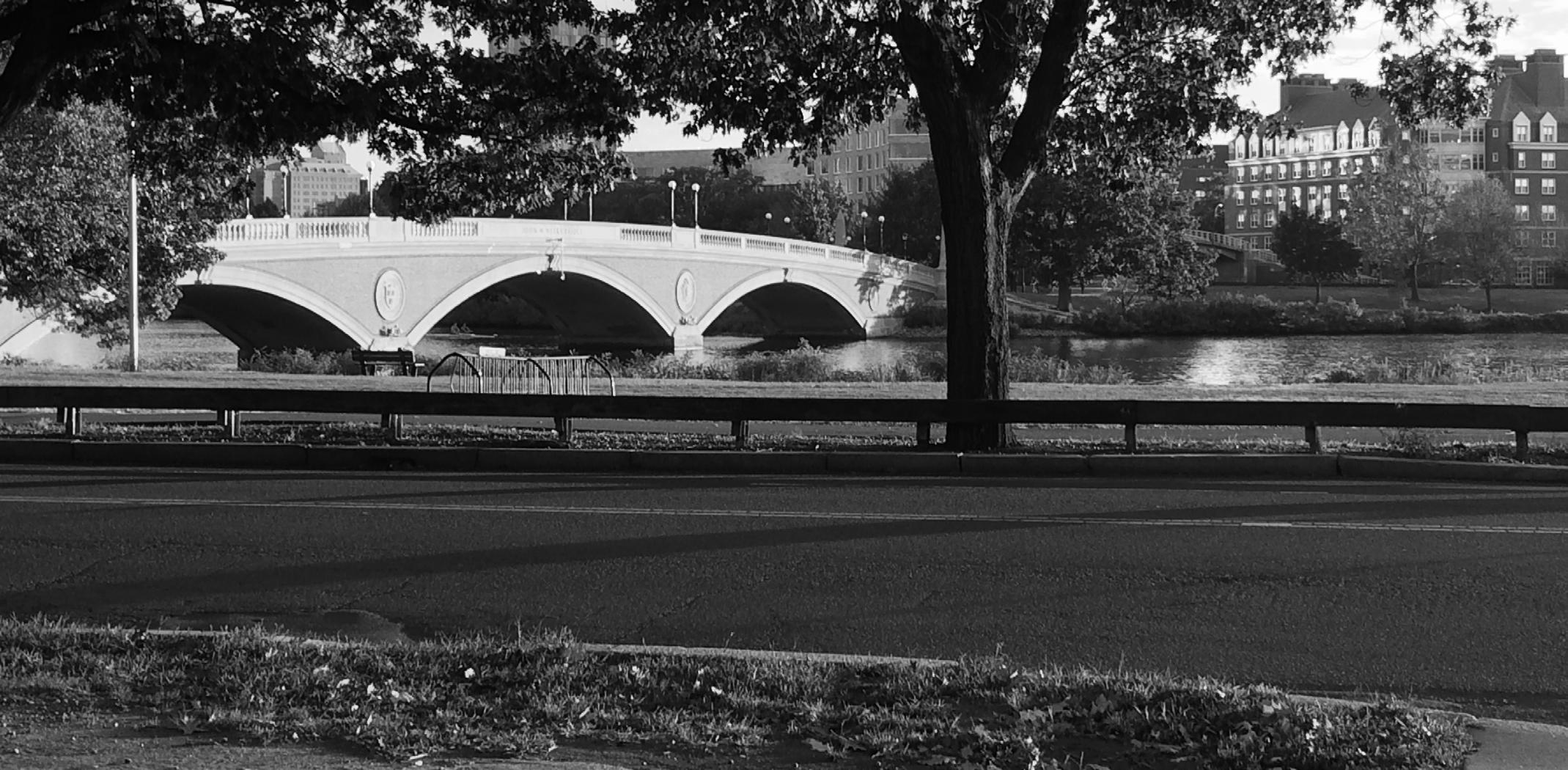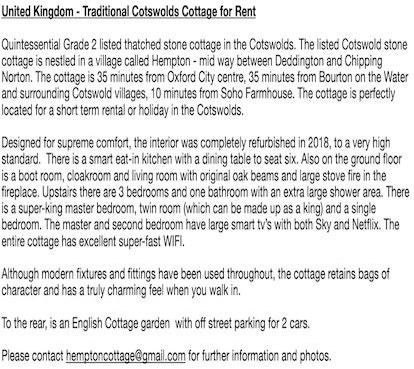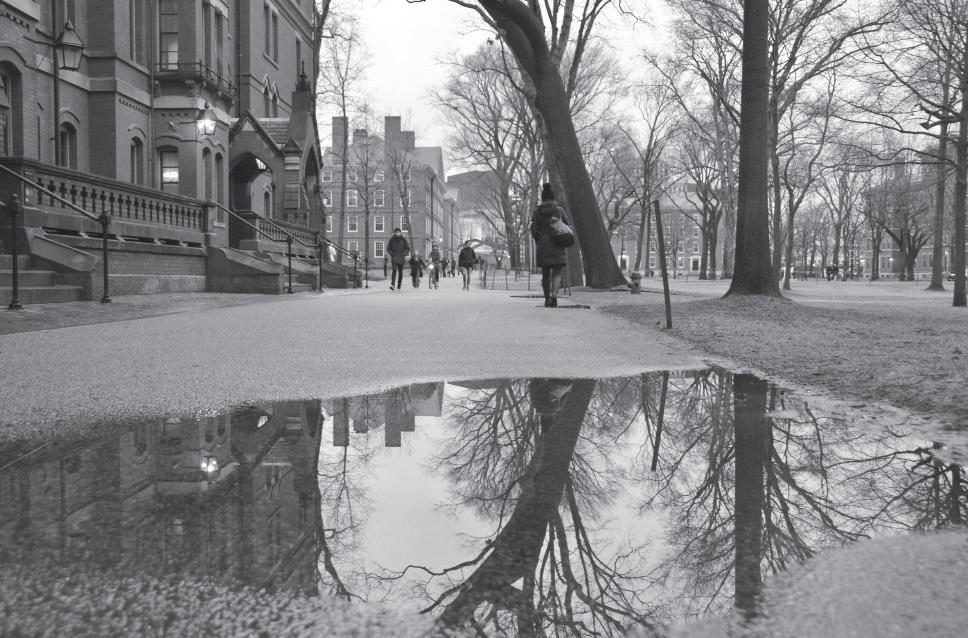THE HARVARD CRIMSON | FEBRUARY 14, 2020
PAGE 4
EDITORIAL THE CRIMSON EDITORIAL BOARD
COLUMN
Do Good Investments Make Good Neighbors?
Spherical Sheep
A
Woojin Lim and Daniel Shin THE CONVERSATION
s wildfires raged across New South Wales, Australia in late January, Harvard Management Company sold off its holdings in two Australian farms and purchased a minority stake in a produce company that operates on the other side of the world. By the time the fires were contained this past Thursday, 13 million acres of land and 2,500 homes had burned in New South Wales. 25 people had died. Of course, none of that probably mattered to HMC, nor to its profit margin; Harvard’s financial spectre was gone, presumably as quickly as it had arrived — now invested in South American avocados, not Australian almonds, let alone the livelihoods of the people who had grown them. The fact that HMC invests directly in natural resources is itself unorthodox. If other large endowments do choose to invest in natural resources, they tend to do so through outside fund managers. HMC’s emphasis on natural resources stretches back to the 1990s and early aughts, when it saw strong profits in the sector. And between 2005 and 2013, HMC doubled down on the strategy. Since the financial crash, HMC has spent more than $1 billion to buy up more than 800,000 hectares of farmland around the world. Some of these landholdings have put Harvard at odds with the surrounding communities. The University has received backlash for allegedly obstruct-
ing access to family burial sites in South Africa, causing health problems for locals in Brazil, and depleting already scarce water supplies in California. All of which should serve as a critical reminder that though HMC presumably engages in transactions involving land presumably to generate profit and diversify its portfolio, that land carries far more significance for the individuals in the community, whose homes and livelihoods depend on it. Land is where local communities build their lives; its value extends far beyond a number of hectares in a spreadsheet. In light of this, we encourage Harvard to adopt an approach to its land and natural resource holdings that is more explicitly cognizant of the sensitivity that surrounds land ownership in any community, especially when such owners are thousands of miles away with no ties to the communities that they are impacting. To be sure, the current CEO of HMC, N. P. “Narv” Narvekar, has changed tack significantly, overseeing a one billion dollar write-down in his first year and suggesting concerns about the risks some of these investments carry. Still, even as HMC pulls back from natural resources, we hope it will work not just to maximize its own returns but also to be a good steward and neighbor in its natural resource endeavors. We do not view these two goals as conflicting;
rather, we think that ideally, responsible stewardship and profitability should go hand in hand. HMC has already spoken to these goals in its Natural Resources Sustainable Investing Guidelines. But speech and action are not the same. And the morally ambiguous choice to sell its land holdings in New South Wales does not inspire our confidence. HMC should not make further investments in land if it is not prepared to engage positively with the people who live there. That said, for Harvard the issue is at once bigger and more local. The land it owns here in the City of Cambridge and in the surrounding areas is a product of the displacement of local residents, and before that, of indigenous peoples. How can the University even consider being a good steward abroad before it has come into that role in its own community? Harvard must be a community member of this land here in Cambridge, the land it holds throughout the United States, and the land it has acquired abroad. This staff editorial solely represents the majority view of The Crimson Editorial Board. It is the product of discussions at regular Editorial Board meetings. In order to ensure the impartiality of our journalism, Crimson editors who choose to opine and vote at these meetings are not involved in the reporting of articles on similar topics.
Submit an Op-Ed Today!
We conduct ethics in a broken world. Both knowingly and unknowingly, we are prone to making irrational, partial, flawed, and deficient moral judgements.
The Crimson @thecrimson OP-ED
When Dining Is Dangerous By OLIVIA S. GRAHAM
M
y mom was driving me home from the airport when I first listened to the 40-second voicemail from my doctor, confirming the results of my biopsy. I had just finished up my sophomore year at Harvard, and the last thing I was expecting was to be diagnosed with celiac disease. Celiac disease is an autoimmune disease for which the only effective treatment is a lifelong gluten-free diet. I used to be an adventurous eater, but today, most food items scare me. Something that tastes good in the moment might leave me fully incapacitated for the rest of the day, lying in bed with a head-splitting migraine and stomach pain. Sure, bread and pasta are off-limits. But, did the kitchen use clean utensils? Was the food prepared on shared surfaces? I have a million questions. When 20 parts per million of gluten threaten your health, every meal you eat represents a risk. I took the fall semester off for an internship and learned how to manage my newfound restrictions while living on my own. But I was shocked to learn how difficult it would be to manage these same restrictions at Harvard. Last October, I visited campus, excited to see my blockmates and feel like a student again. However, walking into the dining hall, I felt a wave of stress wash over me. Sure, some of the ingredients were listed in minuscule print — but I had no way of knowing how the food had been prepared. I had no way of knowing if it would make me sick. I grabbed some fruit and choked back tears as I thought about how difficult navigating food at Harvard would be. I felt distinctly other, overlooked by the current system in place. All I wanted was to feel like a Harvard student again, but it was clear that with my diagnosis, Harvard no longer felt like home. Given the lack of information online, I reached out to the Accessible Education Office and Harvard University Dining Services to learn more about how I was meant to navigate the dining halls. I learned that as a student with celiac, if I want to eat a safe meal, I should email
a specific dining hall the day before and let them know what I want to eat. I am meant to follow this “email method” for all meals, every single day that I am on campus. A big part of my Harvard experience has been spontaneity — I go to office hours and sometimes eat there. I eat with friends in their residential Houses. The current system of dietary accommodations unfairly constrains students with allergies, preventing them from freely participating in activities at Harvard. It should not be this difficult to access safe food. I conducted an informal survey, and found that students on campus echoed
After my diagnosis, I found myself thinking about whether I would have chosen to attend Harvard had I been diagnosed earlier, given that other schools have far more robust programs in place to accommodate students like me. my concerns. Some students found themselves unable to eat in the dining halls, despite having to pay for an unlimited meal plan. Some had given up trying to obtain reasonable accommodations, defeated by a system that refused to listen to their concerns. Some students found the “email method” to be such an inconvenience that they parsed the ingredient lists instead, and sometimes suffered allergic reactions. Think about that — the current system is so difficult that some students choose to risk their health rather than follow it. I was devastated. My peers had confirmed what I suspected: Living with a dietary restriction at Harvard is no easy task. I spent hours speaking to the Dean of Students Office, the AEO, and HUDS, only to be told that the accommodations in place should be sufficient. My only frustration grew when I researched the
Y
ou may have come across something like the following phrase in a physics textbook: “Assume the flying sheep is perfectly spherical.” Though this is an unrealistic stipulation — for sheep don’t fly nor are they spherical — this hypothetical helps us develop a clearer understanding of the physical laws of motion while keeping all other variables constant.Beyond the confines of a physics textbook, ideal theorizing manifests itself in all realms of public discourse. A historical chain of thinkers — from Plato to Rawls — have sided with idealism over realism in thinking hard about philosophical questions. Their inquiries begin to sound like something along the lines of: “What best principles would fully informed, impartial, and rational agents in an ideal society reach when deliberating about matters of morality or justice?” Ideal theorizing happens as we sit back in the reclusive perches of the philosophers’ armchair, distancing ourselves from the world as it really is. We depart from realism in its strictest sense. Heads in the clouds, we toy around with high-level thought experiments replete with ‘what-ifs,’ whiting out real-life barriers and feasibility constraints. Everything is easily solved. The real world as we experience it, however, is imperfect. We conduct ethics in a broken world. Both knowingly and unknowingly, we are prone to making irrational, partial, flawed, and deficient moral judgements. Even the most devoted Kantians (and I can tell you, I know plenty of Kantians running around campus) fail to act strictly on maxims through which they can, at the same time, will as a universal law. Natural inclinations and emotions seep through the veil of pure practical reason. Outliers run rampant: criminals, psychopaths, amoralists, the list goes on and on. If our understanding of morality can be only realized for perfectly situated agents living under utopic conditions, the term ‘everyday ethics’
protocols in place at peer institutions such as Stanford, Yale, Columbia, or Cornell and found that Harvard’s protocols greatly lagged behind them, rendering Harvard far less accessible to students with allergies or dietary restrictions. At Stanford, for example, a full-time nutritionist works with allergic students to ensure accessible food options. Stanford Dining identifies the top 9 major allergens that are contained in, or may have come in contact with, the foods that they serve. Among the Ivy League, while Columbia, Yale, Cornell, and many others have already gone above and beyond to accommodate students with allergies, why has Harvard been so slow to identify top allergens on the serving line and hire a dietitian on the dining staff? After my diagnosis, I found myself thinking about whether I would have chosen to attend Harvard had I been diagnosed earlier, given that other schools have far more robust programs in place to accommodate students like me. When my younger sister was diagnosed with celiac disease a few months after me, I nearly cautioned her not to apply to Harvard. Eating at Harvard is a hassle. The friction inherent to the current accommodations is not only disappointing but embarrassing for the University as a whole. After months of calling, it seems that the administration is finally beginning to understand: These protocols need to change. I appreciate the time that HUDS, the AEO, and Dean of the College Rakesh Khurana, as well as President Lawrence S. Bacow, have spent discussing this topic with me. I am especially thankful to Philip Zeller, my dining hall manager, who could not have been more helpful and accommodating throughout this process. But, I still cannot recommend this process to my sister: The system in place limits my ability to navigate Harvard freely. I may be a Harvard student with celiac disease, but I am still a Harvard student. And I know one thing for sure: Harvard must do better. —Olivia S. Graham ’21 is a Computer Science concentrator in Pforzheimer House.
seems like an oxymoron. Morality in all of its flawlessness might just be a Tantalean spring, perpetually out of reach. Stuck in the depths of Hades, Tantalus, son of Zeus, is condemned to an eternity of hunger and thirst; the fruits hanging on the tree above him forever elude his grasp, and the water always recedes before he drinks. His aim to attain an unattainable state of satisfaction is itself an impossible demand. Following a similar vein, global human rights activism, for many, is disenchanting. No matter how valiant one’s altruistic intentions, it often appears that large-scale institutional and structural change is virtually impossible to realize, provided the unwillingness of the current political climate. ‘What-ifs’ devolve into ‘if-onlys.’ The blame game can be played by many. A number of possible responses present themselves. Throwing darts of radical skepticism and charges of hypocrisy about activism might be one answer. Another way out of this paralysis is to bend our moral standards so as to conform to our natural inclinations. We could just lower the bar. Although this strategy avoids the problem of facing existential despair and moral futility, it comes at the expense of inducing an attitude of moral complacency. These proposals cave into premature forfeit. The project of non-ideal theory emerges as a third alternative. It seeks to bridge the gap between principle and practice, thought and action, philosophy and policy, without having to abandon ideal theory in a world short of the ideal. Non-ideal theory often draws from the empirical social sciences, articulating principles designed to cope with current injustices from the ground up. It asks how we should resolve our felt social and political problems, inching towards making unjust societies more just. For even if we are unlikely to satisfactorily attain the golden mean of virtue, it could still be worth thinking about how we might. While the spherical sheep flying in an isolated vacuum is certainly not a real sheep to most of us (aside from physicists and whoever did the CGI effects for the Cats movie), this deliberate setting aside of complications helps us to elucidate the most significant moving parts, all else equal, one at a time. Both by virtue of its elucidations and its aspirations, ideal theory provides both a starting point and an endpoint. Understanding what constitutes ‘imperfections,’ that is, deviations from the ideal, is impossible without having defined the standard of what ‘perfection’ stands for in advance. The architect’s blueprints lend guidance to the builder’s craft. Even if the perfect building can never be built, we might as well do our best to close the distance between the imperfect and the perfect. The very process of critically thinking, reflecting, (re)drafting, and sharpening our approach to the ideal through the non-ideal is a measure of growth, a statement of effort. For as long as we’re trying, we’re on the right path. —Woojin Lim ’22, a Crimson Editorial Editor, is a Philosophy concentrator in Winthrop House. Daniel Shin ’22 is a Philosophy and Math concentrator in Quincy House. Their column appears on alternate Fridays.




